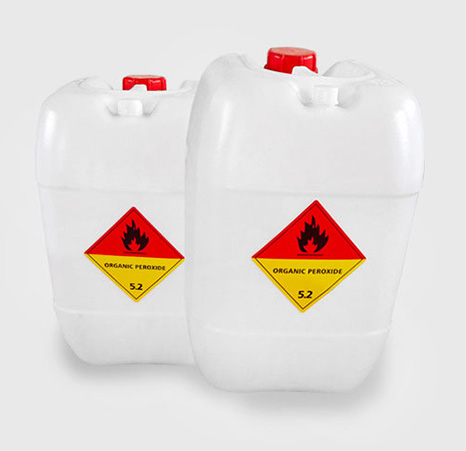Green science and technology of the next? Photovoltaic (pv) power city change glass
Heating and cooling buildings is a huge source of carbon emissions. So can inconspicuous windows become the next wind outlet for green technology?
Using glass to generate electricity
At the end of 2019, employees of UbiquitousEnergy in Sequoia, California, USA gathered in a conference room composed entirely of glass windows. The new glass windows in front of them not only presented the spectacular mountain scenery and beautiful sky in northern California, but also served as photovoltaic batteries to power the company's lighting, computers, and air conditioning.
After years of research and development, the company has achieved a technological breakthrough - power generation glass. The secret lies in the various organic polymer layers added between the glass sheets, some of which can fully transmit light, while others can absorb invisible infrared and ultraviolet rays. When light passes through glass, electrons between polymer layers form an electric current, which is collected by thin wires in the glass.
Veeral Hardev, the director of business development at the company, said, "It's a bit like a transparent computer monitor running in reverse." In other words, the monitor uses electricity to light up various pixels on the screen, and this type of power generating glass can generate electricity at different positions when light passes through the glass.
At present, at a given light level, the power generation capacity of this type of glass is about one-third that of conventional rooftop photovoltaics, and its transmittance is about half that of ordinary glass.
Hardev stated that meeting these indicators is sufficient to make this glass a practical product, and his company is expected to significantly improve the transparency of the glass. As for the lower power generation efficiency, he pointed out that the area covered by windows is larger than that of roofs, so the area advantage can be used to compensate for efficiency deficiencies. You can use both, but windows will generate more electricity, "he added, adding that the biggest challenge is how to expand the window area, which is currently less than 0.19 square meters, to about 4.65 square meters.
Clearer than glass
The revolution of windows should have appeared long ago. With major cities around the world regaining their love for skyscrapers, shining skyscrapers have evolved into fixed attractions in various places, but the glass on the skyscrapers has made little technological progress.
Controlling the temperature of buildings is a huge challenge, with 18% of the funds in the US energy program being used for heating and cooling buildings. According to the Lawrence Berkeley National Laboratory in the United States, the equivalent value of heating lost from windows during cold seasons is approximately $20 billion; In summer, the value of the air lost from the windows of air-conditioned buildings is even greater. In short, more than half of the funds used for building heating and cooling are wasted due to loss through windows.
Mackinac Technology, headquartered in Michigan, is developing a coated plastic sheet that can be placed on the surface of regular glass, improving the insulation and thermal reflection properties of the glass while not affecting the clarity of the field of view. Among them, plastic sheets trap air in the middle, improving the insulation performance of the glass. And the coating can allow visible light to pass through, but it will reflect infrared (carrying most of the heat). John Slagter, CEO of the company, stated that invisible coatings can reduce the light reflected by plastic surfaces and instead increase the transparency of windows and indoor clarity.
By directly installing coated plastic sheets on existing window frames, the thermal insulation performance of single or double glass can be doubled, while it is very lightweight and does not significantly increase the weight of the window. Slagter stated that this new material has successfully passed testing on windows at the University of Calvin in the United States. Thanks to partial funding from US government agencies, this plastic sheet will be promoted and tested in larger pilot projects before it is officially put into use in 2022.
The Struggle between Light and Darkness
But sometimes, high-definition is not an advantage, especially for buildings facing south, where strong sunlight enters the room through windows. Michael McGehee, a materials science researcher at the University of Colorado, Boulder, said, "Although strong light can increase the temperature of a room, people do not like working in sunny environments because they may not be able to see the computer screen clearly. Usually, they choose to close the curtains, but this will lose the scenery outside the window and not enjoy the other benefits of sunlight
To alleviate the glare of sunlight, the McGehee team has long been committed to improving "electrochromic" windows (by applying an electric field to cause stable and reversible color changes in the material), controlling the brightness of the windows through switches, filtering out severe glare, and adjusting the indoor light intake to a comfortable state. Based on this, the window designed by this team includes an indium tin oxide layer containing platinum and a nickel oxide layer, and a lithium solution is filled between the two layers. When a low voltage is applied to the two-layer structure, they act as electrodes to generate an electric field, and lithium ions in the solution migrate and adhere to the nickel oxide layer.
Although lithium is transparent in solution, it appears semi transparent when covered by the nickel oxide layer. McGehee said, "You only need to cover the electrode with a layer of 10 nanometers of lithium to block most of the light," he added, adding that such windows are like the "sunglasses" of buildings. In addition, the degree of shading from sunlight can also be graded and adjusted by changing the voltage.
If these achievements are successfully commercialized, then in the next 10-20 years, windows will become an important component of environmentally friendly cities. This will be a solid step for humanity towards zero carbon footprint.



